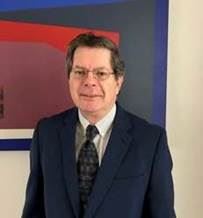Predicting Facies, Rock, and Geomechanical Properties Using Convolutional Neural Networks: A Case study from an Unconventional Shale Reservoir
Ted Holden, Ruth Kurian, Mohammed Ibrahim, Daniel Hampson, and Jonathan Downton
GeoSoftware
Presenter: Jokin Zubizarreta

Abstract
Convolutional neural networks (CNNs) are used to simultaneously predict facies, rock, and reservoir properties from seismic and well data for conventional and unconventional reservoir. However, there is often insufficient training data (i.e., well control) to properly train a CNN. Downton et al. (2020) overcome this issue using a hybrid theory-guided data science (TGDS) model (Karpatne et al., 2017). A two-component model is built where the outputs of the theory-based component are used as inputs to the data science component. Rock physics theory is used to perturb the original well control to generate many synthetic wells spanning the range of the expected geology. Then, seismic theory is used to model synthetic seismic gathers to create a synthetic catalogue that contains both the target logs and seismic gather input. The resulting operators from the trained CNN are applied to the real seismic data to make the reservoir predictions. These predictions can be improved by incorporating the real data into the training by performing transfer learning. This allows the CNN to account for differences between the real and synthetic data thus improving the results.
This work details the necessary modifications to perform this workflow on unconventional reservoirs demonstrating the methodology on a Barnett Shale dataset located in the Fort Worth Basin, Texas. Success requires identifying brittle, frackable, productive layers with high quartz content (Varga et al., 2012; Pendrel and Marini, 2014). Accurate determination of effective porosity requires reliable volumes of clay, quartz, kerogen, and other heavy minerals with results verified by core porosity. Identification of brittle productive layers also requires reliable elastic properties volumes. In our Barnett Shale dataset, seven wells are used to generate hundreds of synthetic wells and seismic gathers. The resulting synthetic data are used to train the CNN algorithm to estimate elastic and rock properties. First elastic properties such as density, P-wave and S-wave impedance are estimated, from which young’s modulus and brittleness are calculated. The second CNN simultaneously estimates the effective porosity, clay, kerogen, and quartz volumes. In addition, a trained CNN on faices logs were used to perform facies classification and generate facies. Figure 1 compares the estimated brittleness volume (Figure 1a) with the quartz volume (Figure 1b). Both predictions accurately match the well log data including the two blind wells.
Key to performing this work is the generation of a well-sampled synthetic training dataset using rock physics-based theory. The modeling is similar to what an interpreter might perform to understand the seismic response of different reservoir conditions. Incorporating the real data into the training via transfer learning significantly improves the results and provides a means to incorporate differences between the real and synthetic data and is a key to improving rock and reservoir properties estimate. The fact that the CNN can simultaneously predict multiple reservoir properties led to significant efficiencies.
Bio for Jokin Zubizarreta
Senior Technical Advisor, GeoSoftware
Jokin is Senior Technical Advisor for GeoSoftware. He has 35 years of
worldwide experience in structural and stratigraphic seismic
interpretation, reservoir characterization and prospect evaluation. He
has worked in international operating companies as well as service
companies in the oil and gas industry. He specializes in seismic
inversion methods and technology. He holds a B.S. in Geology from North
Carolina State University.